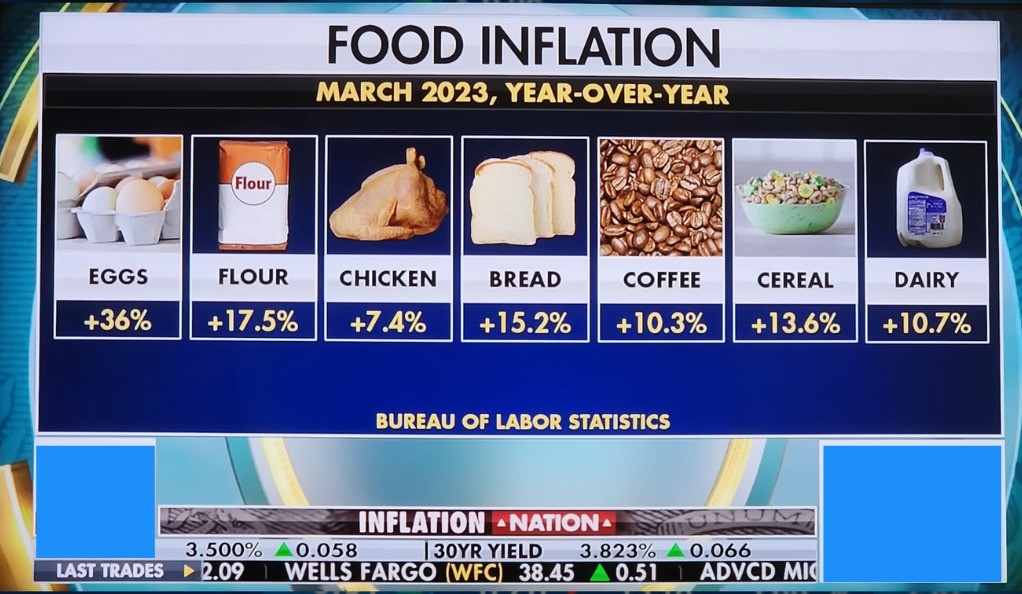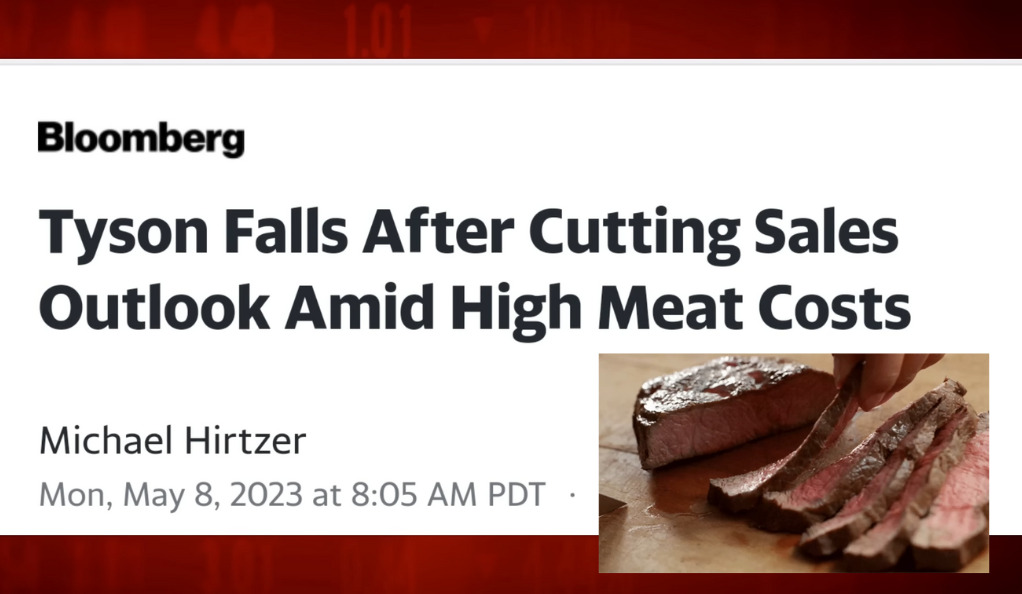In recent times, the world has witnessed a surprising and concerning trend: the surge in food prices. From sugar to olive oil, pasta to meat, the cost of essential food items is skyrocketing. This trend is not just a statistical anomaly; it’s a real and tangible issue affecting households, industries, and even governments. The implications are far-reaching, impacting the economy, health, and lifestyle.
But what’s behind this trend, and how does it affect the average consumer? Is it a temporary blip or a sign of a deeper economic shift? This comprehensive look aims to unravel the complexities of rising food prices and shed light on what it means for all of us.
Surge in Sugar Prices

Sugar’s Sweet Rise
Sugar, a staple in many households, has seen an unprecedented rise in prices. This isn’t a chart of a meme stock or a technology stock; it’s the real deal. The impact is far-reaching, affecting anything containing sugar, including everyday food items. From candies to beverages, sugar’s price surge is leaving a bitter taste in consumers’ mouths.
- Inflation Contradictions: Despite claims that inflation is dead or cooling, sugar prices tell a different story. Economists and media pundits may downplay the issue, but the numbers don’t lie. The surge in sugar prices contradicts the soothing words and raises questions about the broader economic landscape.
- Sugar as the Oil of Food: Sugar’s importance in the food industry is likened to oil in the economy. Its price affects many food items, leading to a ripple effect across the market. Just as rising oil prices can disrupt transportation and manufacturing, surging sugar prices can upset the balance in food production and retail.
- A Humorous Twist: On a lighter note, the rise in sugar prices has even led to humorous mentions of keto diets and the weight loss drug Ozempic. While these jests add a touch of levity to the discussion, they also highlight the cultural significance of sugar in our diets and lifestyles.
Bankruptcy of Jenny Craig
In a surprising turn of events, Jenny Craig, a well-known weight loss company, filed for bankruptcy. This development adds a unique perspective to the discussion on food prices and weight loss trends. The bankruptcy of a major player in the weight loss industry raises questions about the relationship between food prices, dietary choices, and health. Are rising food prices affecting the way people approach weight loss? Is the cost of healthy eating becoming prohibitive? The Jenny Craig bankruptcy offers a glimpse into these complex dynamics.
Rising Food Prices: A Closer Look

Eggs, Flour, Chicken, and More
The surge in food prices isn’t limited to sugar. There have been significant increases in the prices of various food items, including eggs, flour, chicken, bread, coffee, cereal, and dairy. This trend paints a worrying picture for households worldwide. The cost of breakfast, lunch, and dinner is on the rise, and it’s not just a matter of a few cents here and there. These increases add up, straining budgets and forcing families to make tough choices. The affordability of nutritious food is at stake, with potential consequences for health and well-being.
Federal Reserve and Inflation
- The Need to Combat Inflation: The Federal Reserve may need to raise rates to combat this inflation, adding complexity to the economic landscape. The decision to raise rates is never taken lightly, as it can have wide-ranging effects on borrowing, investment, and growth. The rise in food prices adds urgency to this debate, highlighting the real-world impact of inflation on everyday life.
- U.S. Consumer Inflation Expectations: The rise in food prices also reflects in U.S. consumer inflation expectations. People are feeling the pinch, and their expectations for future inflation are shifting. This change in perception can influence spending and saving behavior, adding another layer of complexity to the economic picture.
Reasons for Sugar Price Increase
Weather, Demand, and OPEC’s Decision
Several factors are contributing to the rise in sugar prices:
- Extreme Weather: Key countries like India, Thailand, China, and Pakistan are experiencing weather-related challenges affecting sugar production. Unseasonal rainfall, droughts, and other climatic factors are reducing crop yields, tightening supply. The vulnerability of agriculture to weather patterns is a reminder of the delicate balance in our food systems.
- OPEC’s Decision: OPEC’s decision to slash oil output has led to sugarcane being diverted to ethanol production, further tightening sugar supplies. This shift reflects the interconnectedness of energy and food markets, where a decision in one area can have unexpected consequences in another.
Olive Oil Prices: A Slippery Slope

Spain’s drought has caused a 26-year high in olive oil prices. The impact on global olive oil prices is profound, with Spain being a major producer. The situation has turned olive oil into a luxury item in some regions, such as Lebanon, where economic crises have pushed millions into poverty. The rise in olive oil prices is not just a matter of paying a little more at the supermarket; it’s a cultural and economic issue with deep roots.
The war in Ukraine, affecting sunflower oil production, has led to increased demand for alternatives like olive oil. Consumers are forced to adapt, shifting preferences and spending patterns. The global interconnectedness of food markets means that a conflict in one region can affect dinner tables thousands of miles away.
Pasta Prices in Italy: A National Concern
Italy’s crisis meeting over a 17.5% spike in pasta prices highlights the cultural importance of this food item. Pasta is more than just a dish in Italy; it’s a symbol of national identity and culinary tradition. The rise in pasta prices is not just an economic issue; it’s a matter of cultural pride and social well-being.
Differences in pasta production between Italy and the U.S., including the use of durum wheat in Italy, add complexity to the issue. The unique characteristics of Italian pasta, governed by the “Purity Law,” make it more challenging to produce but also more desirable. The spike in pasta prices is a reminder of the delicate balance between tradition, quality, and affordability.
Pizza Prices: A Slice of Inflation

From New York City to the EU, pizza prices are surging. Factors like the cost of flour, tomato, mozzarella, olive oil, and power for baking contribute to this increase, making even a simple pizza a costly affair. The rise in pizza prices is not just a matter of a few extra dollars on a Friday night; it’s a sign of broader economic pressures.
The Bloomberg Pizza Margarita Index, a real measure, shows a 30% increase in pizza prices over the past year. This statistic is more than just a quirky fact; it’s a reflection of the complex interplay of ingredients, energy, and consumer preferences. Pizza, a beloved comfort food, is becoming a luxury, and that’s food for thought.
Meat Prices and Tyson’s Earnings

The largest meat packer in the U.S., Tyson, experienced a stock crash due to rising meat and poultry prices. The company’s challenges in passing the increased costs to consumers led to shrinking margins and a significant financial hit. This development is a stark reminder of the thin line between profit and loss in the food industry.
The rise in meat prices is turning a basic food item into a luxury. Consumers are forced to rethink their dietary choices, and companies like Tyson are caught in the crossfire. The dynamics of meat pricing offer a glimpse into the broader challenges of food production, distribution, and consumption in a rapidly changing economic landscape.
Impact on Italian Restaurants: A Culinary Crisis
Italian restaurants, known for their delicious pasta, olive oil, and pizza, are facing a culinary crisis. The rising costs of key ingredients are putting immense pressure on these establishments. Can they pass the costs to customers without losing business? Can they maintain quality without compromising profitability? These questions are at the heart of a dilemma that goes beyond the kitchen. It’s about culture, tradition, and the very essence of Italian cuisine.
Conclusion: A Plate Full of Challenges
The surge in food prices is more than just a statistical trend; it’s a plate full of challenges. From the sweet rise of sugar to the slippery slope of olive oil, from the national concern over pasta in Italy to the slice of inflation in pizza prices, the world is grappling with a complex and concerning phenomenon.
The reasons are many, and the implications are far-reaching. Weather patterns, global events, economic policies, and even cultural preferences are all part of the mix. The impact on consumers, industries, governments, and even restaurants is real and tangible.
As we sit down to our next meal, let’s take a moment to reflect on what’s really on our plate. The food we enjoy is a product of a delicate balance of factors, a balance that is increasingly under strain. Whether it’s a matter of paying a little more at the supermarket or rethinking our dietary choices, the surge in food prices is a taste of the complex world we live in. It’s food for thought, indeed.
Ainu Token aims to offer impartial and trustworthy information on cryptocurrency, finance, trading, and shares. However, we don't provide financial advice and recommend users to conduct their own studies and thorough checks.



Comments (No)